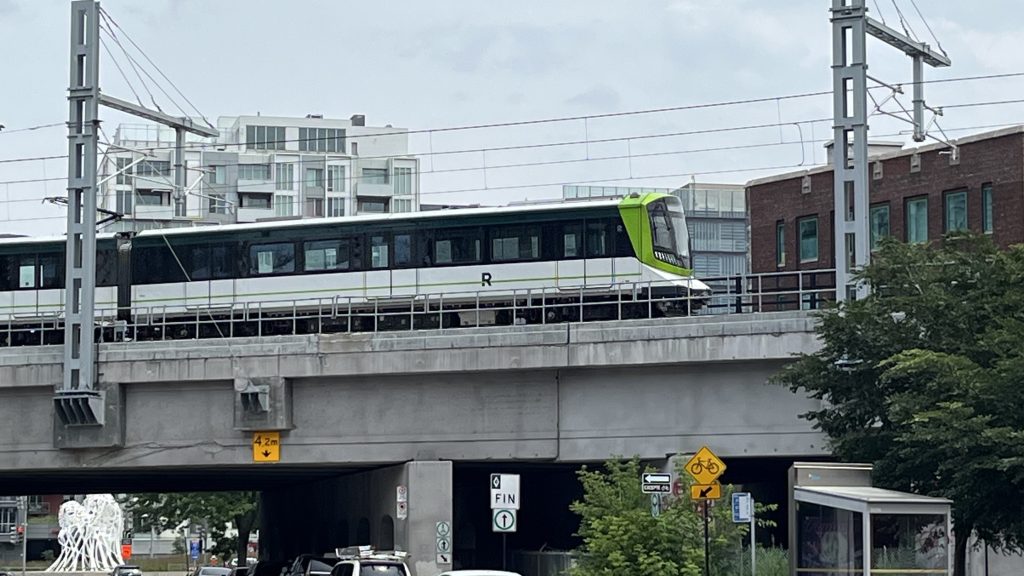After pandemic delays and price tag revisions, Montreal’s REM about to become reality

Posted July 26, 2023 4:29 pm.
Last Updated July 26, 2023 7:20 pm.
Quebec’s largest public transit project in decades, the Réseau express métropolitain (REM), will be inaugurated Friday.
The massive light rail project’s first line, connecting Montreal’s South Shore with downtown, has been in the works since 2015.
“Already in 2007, the Montreal Transit Transportation Plan, there were some projects like a link to the West Island and a link to the airport and also a link to the South Shore,” said François Pepin of Trajectoire Quebec. “So as a matter of fact, the government passed a bylaw in 2015 and from there they began to work on the project.”
Construction broke ground in 2018. Shortly after it was faced with delays, partly due to an explosion in the Mount Royal tunnel in 2020 and the COVID-19 pandemic.
“The Caisse de Dépôt was really fast in executing the project,” said Hisham Negm with TRAM, a transportation research group at McGill University. “They had the technology, they had the knowledge, and even when the delays happened with the two years, they were justified by COVID and the supply chain being cut off.”
RELATED:
- Timeline: construction of Montreal’s REM
- Ride the new REM for free July 29 and 30
- Contest to be one of the first 100 people to ride the new REM
- REM in service on the South Shore within ’30 to 45 days’
- REM delayed once again
For now only five out of 26 stations will be in service when the system is open to the public officially on Monday, with the rest expected to open in 2024.
“I’m personally very excited for the airport section of it because which city does not need a strong, fast connection to the airport?” said Negm.
REM cars are scheduled to operate 20 hours a day, every day. They will eventually cover more than 67 kilometres.
“It’s a great improvement for the Montreal transit system,” said Pepin. “Of course, people have been waiting for more than 40 years on the South Shore to get secure links transiting between the south in downtown. And of course, in a couple of years, it will be also a very good improvement of service in the West Island.”
Riders will be able to take the REM for free this weekend, ahead of the opening day.
“The most important thing when it comes to building such high frequency projects with a lot of trains and a crazy infrastructure that takes years to build, is that you want to guarantee the level of ridership,” said Negm. “And with what’s happened in the last couple of years with telecommuting coming to stay and a lot of commuters not really taking transit anymore, the level of ridership is a little bit unexpected at this point.”
There isn’t yet a final price tag on the project; the last revision in June 2021 had it at $6.9 billion.
“Maybe eight billion or nine,” said Pepin. “But that amount doesn’t include all the works that the cities did for the stations. And also Hydro-Québec put money in the project and so we’ll have to wait…. there’s a lot of other amounts to be added to the bill overall.”
“Hopefully it’s going to work out and get the levels of people that will keep it going and pay for it,” added Negm. “But we’ll see what happens.”








